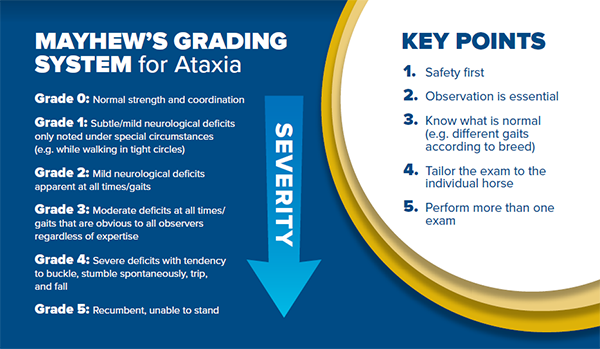Neurological Examination in the Horse- How It’s Done
By: Amy Young
UC Davis The Horse Report
Equine neurological examinations* evaluate horses from head to tail. They are performed to evaluate signs consistent with neurologic disease or to establish that a horse is neurologically normal, such as during a pre-purchase exam. A neurological exam can be divided into two parts: static and dynamic.
The Static Examination occurs while the horse is standing still.
- The horse is observed to determine its behavior (docile, aggressive, etc.) and mentation (bright or lethargic).
- The functions of the cranial nerves, which run in 12 pairs from the brainstem along each side of the head and transmit everything from smell to swallowing, are assessed. Abnormal reflexes can help pinpoint the location of any damage.
- The posture of the head, neck, trunk, tail, and limbs is also observed to evaluate proprioception (the horse’s ability to know where it’s body is positioned in space).
- The horse’s body is palpated to assess pain, loss of muscle, numbness, localized heat, and swelling. Joints are flexed/extended. These tests can indicate damage to specific nerves.
The Dynamic Examination occurs while the horse is in motion. These steps should be performed on the ground, not while riding. These steps determine if a horse knows where its feet are and can control its limbs. As opposed to a normal horse who keeps its limbs under its body and can maintain a consistent rhythm, neurologically impaired horses may step on themselves, swing their limbs wide, pivot, drag their toes, easily lose balance, and exhibit gait abnormalities.
*These steps outline a general neurological examination. Individual veterinarians may favor slight modifications.
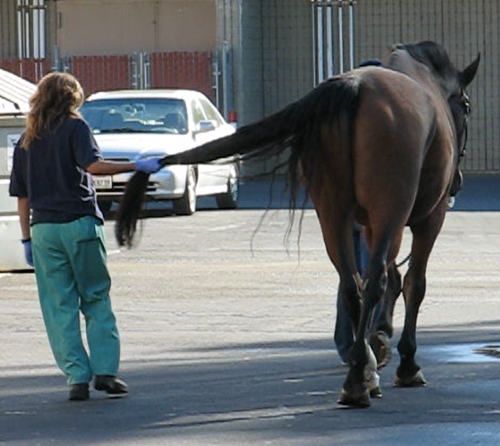
Tail pull/body push
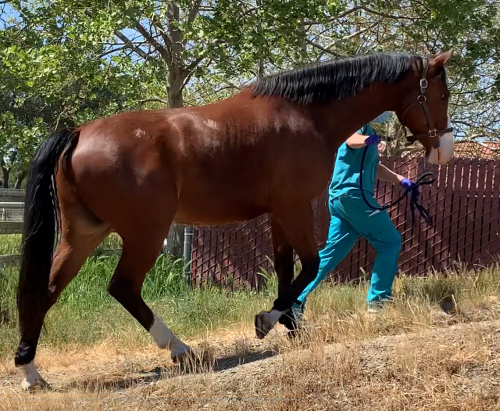
Walking up a hill
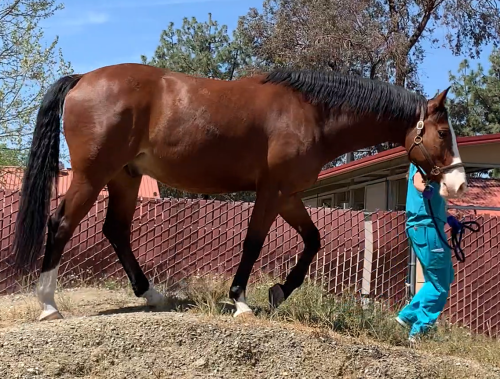
Walking down a hill
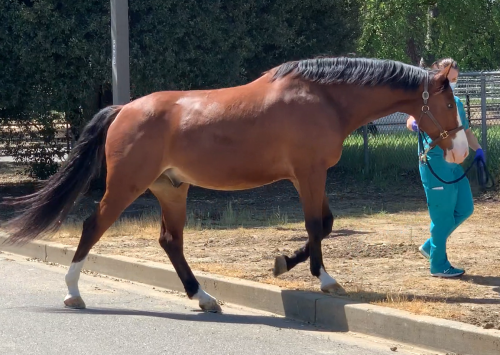
Walk on different surfaces
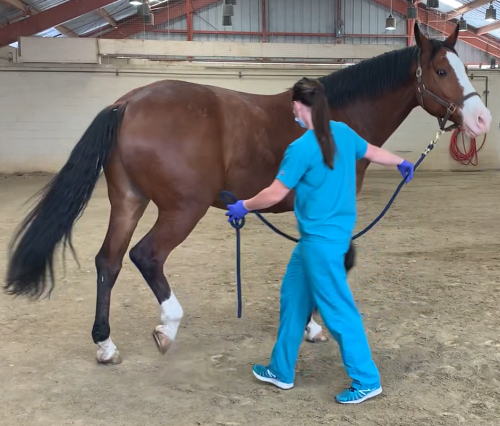
Walk in small circles to the left and right
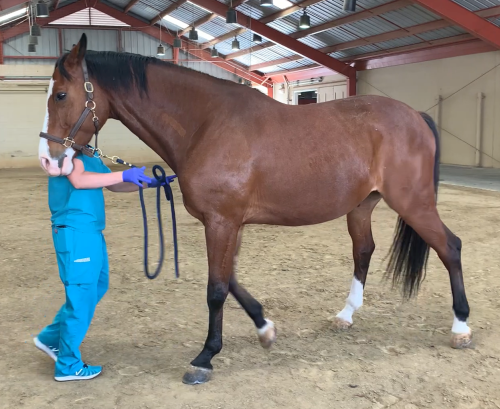
Back up at the walk
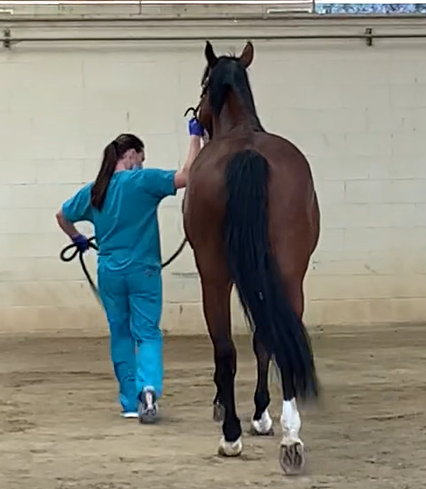
Walk with head elevated
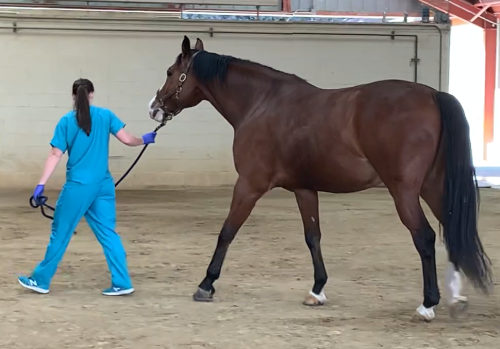
Walk in a zig-zag
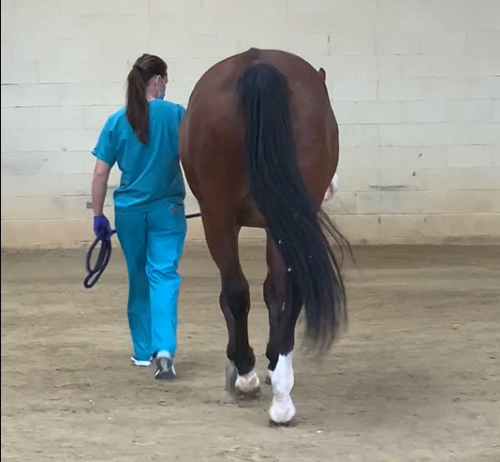
Walk in a straight line
